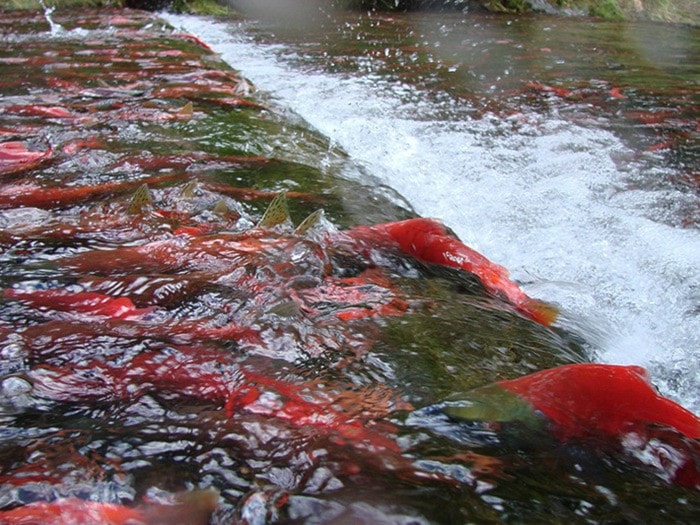A virus found in kokanee salmon on Kootenay Lake has biologists taking action to protect this “keystone species.”
The virus is called infectious hematopoietic necrosis or IHNV and was first discovered last fall during routine fish health testing at the Meadow Creek spawning channel. Further investigation found kokanee in Meadow Creek, Redfish and the Lardeau waterways had IHNV. It’s presumed those in the Kokanee spawning channel are infected as well.
“It seems to be throughout Kootenay Lake at present,” said senior fisheries biologist Jeff Burrows with the Ministry of Forest, Lands and Resource Operations. “We’re concerned because kokanee are not only a sport fish, they’re a keystone species in the whole Kootenay Lake food web. So many animals rely on kokanee — bears, osprey, even mallard ducks eat the eggs. They’re important.”
He explained that Kokanee successfully spawned last fall and eggs were tested and found to be virus free. Transmission appears to be between adult fish rather than from fish to offspring.
“But the reason it’s of concern is that young fry are very susceptible and can die so when they hatch this spring in the spawning channel, they might catch it,” said Burrows.
Upon learning of the virus’ presence, local spawning channels were flushed to “hopefully wash out the virus that might otherwise have lingered until now,” said Burrows.
Fish carcasses, presumably virus laden, that died after spawning according to their natural life cycle were also removed.
“We’re hoping that will, at least if not prevent, mitigate the risk to fry,” he said.
Burrows said this spring fish will be monitored and sampled for IHNV as they integrate into the main lake. This summer when regular maintenance to channels occurs, they will be completely shut off and dried out which will also kill the virus.
While the virus is commonly found in trout and salmon throughout Western North America, it hasn’t been found in the Kootenay throughout the past 20 years. It currently isn’t found in Arrow Lakes or the Upper Kootenay Lake.
“We actually don’t know why IHN has turned up or where it came from in Kootenay Lake,” Burrows said.
There are two separate “stocks” of Kokanee with the population in the West Arm on the rise. However, 2013 numbers in the main lake, 200,000 spawners, are as low as they have been since records began in the mid-1960s.
“It’s not unprecedented. It’s been this low before but it is as low as it has gotten in that time period,” said Burrows.
He explained factors other than the virus are at play, including high predator rates. Regardless, an illness in the lake isn’t “welcome.”
Other fish such as rainbow and bull trout along with white sturgeon can get the virus. Gerrard rainbow trout rely on Kokanee as their sole food source and that contact could mean they are susceptible, said Burrows.
This spring, the Ministry also plans to collect and test ovarian fluid from Gerrard as they return to the Lardeau channel to spawn.
There is no risk to humans or other animals from IHNV.
